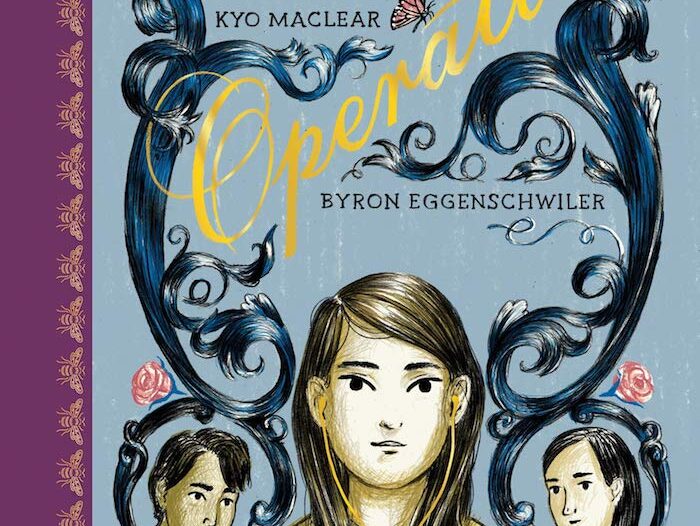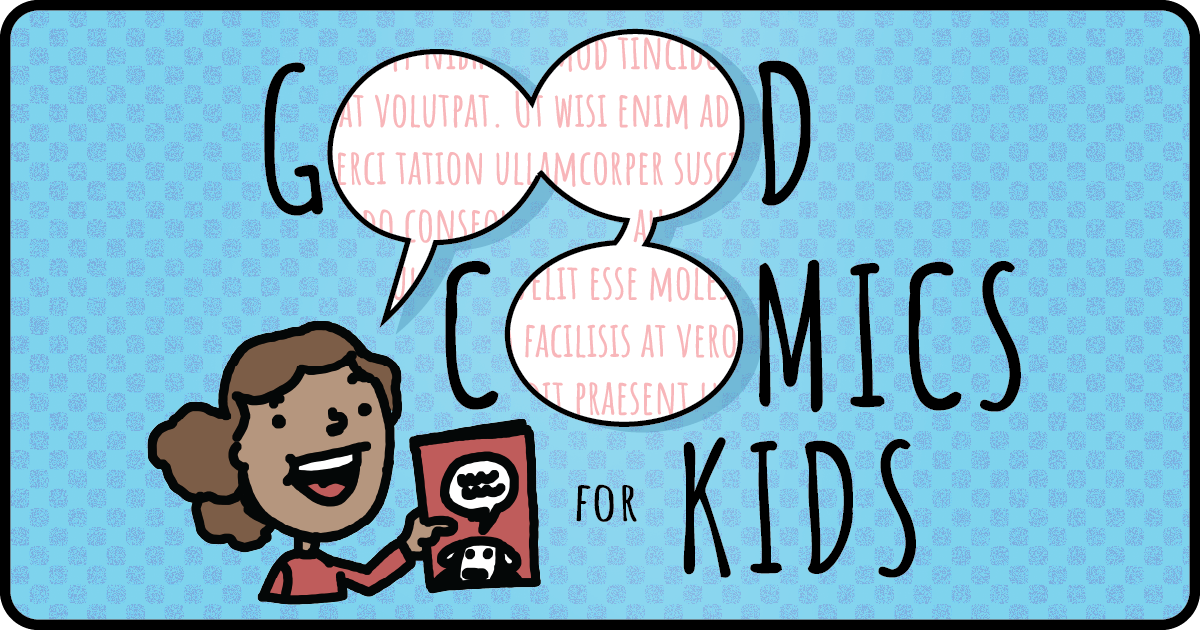
Review: ‘Operatic’

Operatic
Writer: Kyo Maclear
Artist: Byron Eggenschwiler
Groundwood Books; $19.95
Sound is a notoriously difficult thing to capture in the comics medium, hence the creation of the stereotypical onomotopeia “sound effects”—You know, your basic booms, biffs and pows appearing in colorful block lettering over the art. Even more difficult still—in fact, nigh impossible—is trying to capture music in comics form. That is what makes Kyo Maclear and Byron Eggenschwiler’s Operatic such a remarkable book on a purely technical, mechanical level. Operatic is about music, and thus music appears throughout it, translated into imagery.
You can’t make out the particular songs by the visuals alone, of course, but Eggenschwiler deftly and repeatedly captures the feeling of music through his inspired and innovative artwork, and he does it differently nearly every time. That Operatic is the collaboration of a writer and an artist, rather than the work of a single cartoonist, makes it more remarkable still, as the unusual visuals that sometimes push a reader into a sort of synesthesia do so much of the storytelling, not just in evoking particular feelings, but in the plot as well.
ADVERTISEMENT
ADVERTISEMENT
It’s really an amazingly well-made comic.
Charlie is weeks away from graduating middle school, and her music class is learning about different genres of popular music. Their teacher Mr. K believes that everyone in the world has a song all their own, a perfect song that seems to have been made just for them (His is A-Ha’s “Take On Me”). As part of the class’ end-of-the-year assignment, he’s asking each of them to choose their own song, and write an essay about it.
Charlie is having a little trouble with it, but then she’s got a lot on her mind, as all middle-schoolers do. For one, she’s distracted by the empty desk in Mr. K’s music class, formerly occupied by Luka, a kid in her class who mysteriously stopped coming to school. And then there’s Emile, who Charlie has a crush on. Quiet, thoughtful and kind, Emile is more interested in insects than anything else in the world, which draws him the ire of some classmates, and seems to make Charlie only more curious about him.
As the book unfolds, we sit in on portions of Mr. K’s class, the longest section of which is devoted to his lesson on Patti Smith’s 1975 Gloria. When students point out that she can’t really sing, and sounds “kind of demented,” Mr. K responds, “This is the kind of song that can destroy and remake you…This, people, is a song with immeasurable feeling.”
Charlie doesn’t find her song until they get to opera, and she discovers Maria Callas, who, a quote on the first page of the book tells us, Patti Smith used to dream of being when she was a teenager. Opera is, of course, all about feeling: Huge, powerful, out-sized feeling. It’s not exactly a popular genre for the tween or teen set and, to my knowledge, never has been, but it maps pretty well with the emotional turmoil that defines that period of life.
Eggenschwiler’s artwork seems to have been created entirely with colored pencil, although the fine print says “a combination of pencil drawings and digital techniques.” I don’t know from digital techniques, but the pencil strokes all seem to be quite visible on the page, giving the book a gauzy, nostalgic, almost homemade look, the bulk of it composed in yellows, blacks and browns. He shifts color with time periods. An extended flashback revealing the story of Luka before he disappeared is done in blues, while Callas’ biography, which is embedded in the story as Charlie researches her for her project, is in red.
The art is inventive throughout, symbolically charged imagery used to put Charlie’s feelings on the paper—here one suspects that the artist’s experience as an illustrator was particularly helpful—but, as I said, it’s the drawing of the feeling of sound and music that is most remarkable.
ADVERTISEMENT
ADVERTISEMENT
When Mr. K talks about how listening to “Take On Me” takes him back to his own teenage years, Eggenschwiler deconstructs his realistic drawing of the character to a super-loose black and yellow doodle, then deconstructs it further to a squiggly vertical line and a squiggly black line, and then the yellow line becomes the music coming out of Mr. K’s teenage self’s headphones, the black now appearing as musical notes and the lettered “Doo Doo DUH Doo” sound of the song. On the next page, the Mr. K that became a line that became music has become the borders of the panels capturing his memories, and then it reassembles back into Mr. K through the same process.
When Luka sings, his voice is shown as a little blue line, and then it begins oscillating as it gets higher and swings more wildly, becoming a tangled knot of jagged wires.
And when we first “hear” Maria Callas, a little red line appears beneath the needle on the record player in Mr. K’s classroom. Then it grows into an ornate vine that crawls along the floor, fluctuating like the lines on an oscilloscope. It creeps up Charlie’s desk, wraps around her and lifts her into the air. Her classmates “attack” the music with “That’s NOT singing” and “This is music for rich people” and “For dead people”, their words appearing in dialogue balloons shaped like axes and saws cutting into the music vine, but their words do little more than knock off a few leaves.
Charlie has found her song.
Operatic is structured somewhat strangely, with the mystery of Luka being built up only to be revealed all at once and resolved perhaps too quickly, before we even get a sense of who he is, but then, this is a somewhat strange book, more concerned with feeling than with story. And it communicates that feeling perfectly.
Filed under: Graphic Novels, Reviews, Young Adult
About J. Caleb Mozzocco
J. Caleb Mozzocco is a way-too-busy freelance writer who has written about comics for online and print venues for a rather long time now. He currently contributes to Comic Book Resources' Robot 6 blog and ComicsAlliance, and maintains his own daily-ish blog at EveryDayIsLikeWednesday.blogspot.com. He lives in northeast Ohio, where he works as a circulation clerk at a public library by day.
ADVERTISEMENT
ADVERTISEMENT
SLJ Blog Network
One Star Review, Guess Who? (#202)
Review of the Day: My Antarctica by G. Neri, ill. Corban Wilkin
Parsing Religion in Public Schools
Take Five: LGBTQIA+ Middle Grade Novels
ADVERTISEMENT







